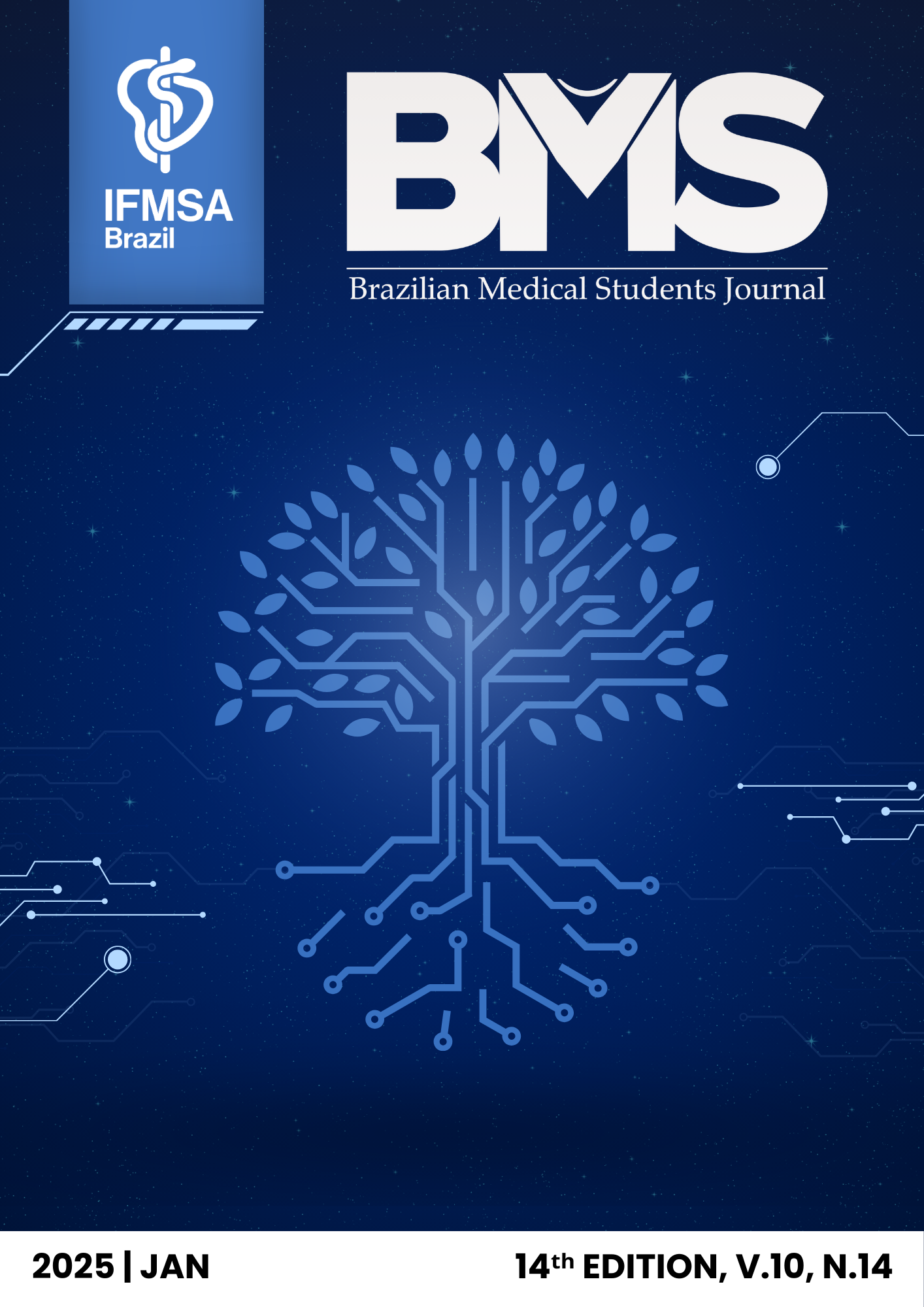TENDÊNCIA TEMPORAL E DISTRIBUIÇÃO ESPACIAL DA SÍFILIS CONGÊNITA NO ESTADO DO RIO DE JANEIRO DE 2012 A 2022: UM ESTUDO ECOLÓGICO-DESCRITIVO
DOI:
https://doi.org/10.53843/bms.v10i14.883Keywords:
Sífilis Congênita, Saúde Pública, Perfil EpidemiológicoAbstract
Introduction: Congenital syphilis (CS) results from the vertical transmission of Treponema pallidum. The study aimed to analyze the incidence and socio-environmental factors associated with CS in Rio de Janeiro between 2012 and 2022, as the state positioned itself first and above the national average of infected pregnant women in 2022. Methods: An ecological, descriptive study with a quantitative approach was conducted using data from SINAN, available on the DATASUS platform. The data were presented in the form of incidence rates, absolute numbers, and percentages. Results: The total number of CS cases in Rio de Janeiro during the analyzed period was 42,064. Most diagnoses were made within 6 days of the child's birth (87.98%). The age group of mothers with the highest number of CS cases was between 20 and 24 years old (35.5%). Maternal education with the
highest number of CS cases is incomplete elementary education (20.2%). The majority of individuals with CS self-identified as mixed race (47%). 79.3% of mothers received prenatal care. 10% of sexual partners underwent treatment for syphilis after their partner’s diagnosis. 92% of children with CS are alive after diagnosis. The microregion corresponding to the capital of Rio de Janeiro had the highest number of CS notifications (36,325). Discussion: The increase in CS notifications suggests greater disease screening during pregnancy, combined with improvements in prenatal care programs. However, a higher incidence of CS was identified in marginalized populations with low educational attainment, needing improvements in prenatal care programs, as CS is a disease with easy diagnosis and accessible treatment. Conclusion: The study demonstrates the growth in CS incidence in the population of Rio de Janeiro, highlighting the need for the implementation of public policies for the most vulnerable populations.
Metrics
References
Ministério da Saúde. Protocolo Clínico e Diretrizes Terapêuticas para atenção integral às pessoas com infecções sexualmente transmissíveis. Brasília (DF): Ministério da Saúde; 2015
Ministério da Saúde. Protocolo Clínico e Diretrizes Terapêuticas para atenção integral às pessoas com infecções sexualmente transmissíveis. Brasília (DF): Ministério da Saúde; 2022
França ISX de, Batista JDL, Coura AS, Oliveira CF de, Araújo AKF, Sousa FS de. Fatores associados à notificação da sífilis congênita: um indicador de qualidade da assistência pré-natal. Rev Rene, 2015 Jun; 16 (3): 374-381.
Benito LAO, Souza WN de. Perfil epidemiológico da sífilis congênita no Brasil no período de 2008 a 2014. Universitas: Ciências da Saúde, 2016; 14 (2): 97-104.
Ministério da Saúde. Boletim epidemiológico de sífilis. Brasília (DF): Ministério da Saúde; 2023.
BRASIL. Ministério da Saúde. DATASUS. Tabnet. Brasília, DF: Ministério da Saúde, 2024. Disponível em: https://datasus.saude.gov.br/informacoes-de-saude-tabnet/.
Kimball A, Torrone E, Miele K, Bachmann L, Thorpe P, Weinstock H, Bowen V. Missed Opportunities for Prevention of Congenital Syphilis - United States, 2018. MMWR Morb Mortal Wkly Rep. 2020 Jun; 69(22): 661-665.
Lago EG. Current Perspectives on Prevention of Mother-to-Child Transmission of Syphilis. Cureus. 2016 Mar; 8(3): e525.
Lago EG, Vaccari A, Fiori RM. Clinical features and follow-up of congenital syphilis. Sex Transm Dis. 2013 Feb; 40(2): 85-94.
Downloads
Published
How to Cite
Issue
Section
License
Copyright (c) 2025 Gabriela Lyons, Lyzeli Lidiane da Silva, Pedro Lavalle Carneiro, Juliana Braga Rodrigues de Castro

This work is licensed under a Creative Commons Attribution 4.0 International License.
User licenses define how readers and the general public can use the article without needing other permissions. The Creative Commons public licenses provide a standard set of terms and conditions that creators and other rights holders can use to share original works of authorship and other material subjects to copyright and certain other rights specified in the public license available at https:// creativecommons.org/licenses/by/4.0/deed.pt_BR. Using the 4.0 International Public License, Brazilian Medical Students (BMS) grants the public permission to use published material under specified terms and conditions agreed to by the journal. By exercising the licensed rights, authors accept and agree to abide by the terms and conditions of the Creative Commons Attribution 4.0 International Public License.






